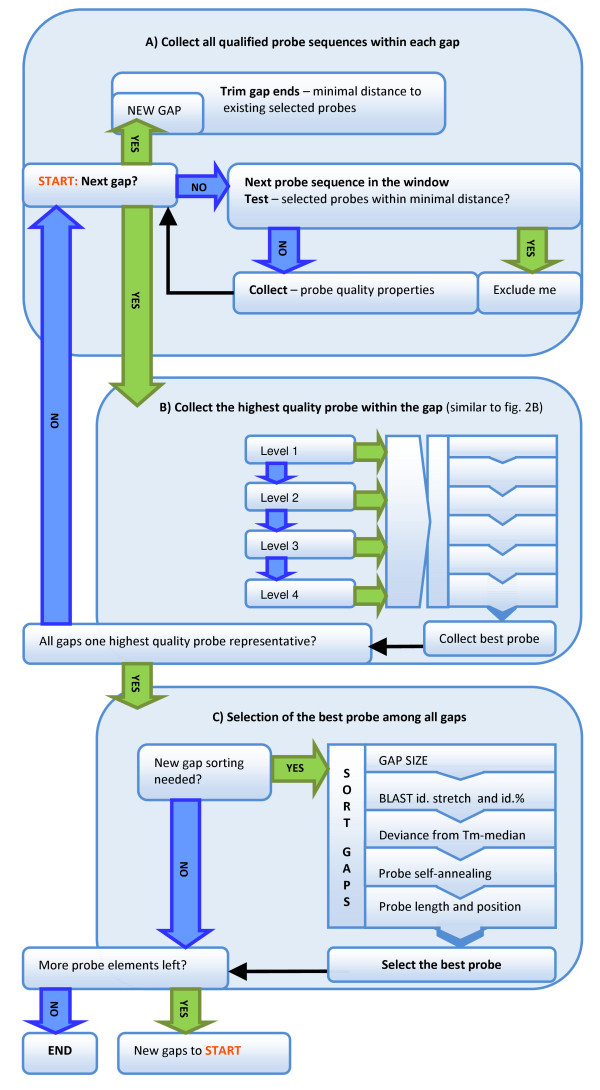Figure 3.
Schematics of the gap-filling. A) Collect all qualified probe sequences within each gap. This involves removing probe sequences at the gap ends and other repeated probe sequences that appear within minimal distance to already selected probes. B) Collect the highest quality probe within the gap. In the first probe screening step, one best probe representative from each gap is collected based on the same ranking criteria used in Figure 2B. C) Selection of the best probe among all gaps. The best probes, one highest quality probe from each gap, are ordered by descending gap size and then by the following criteria: BLAST percentage identity and stretch; deviance from median Tm; probe self-annealing; and, probe length and position. The highest quality probe from the largest gap is selected. Every additional probe selected generates two new gaps which are orderly added to the existing gaps. The gap-filling is repeated until all probe spots on the target microarray are used.

